Knightly and non-knightly armor of the Vienna Imperial Arsenal
Second Book of Maccabees 8: 27)
Military museums of Europe. We continue to familiarize ourselves with the collection of armor and weapons exhibited in Vienna imperial arsenal, and today we will again have the armor of the "sunset era". That is, those that appeared after the 1500 year. But this time we will get to know the full armor (mainly) and only partly with the military ones, those that replaced the armor of the knights. Well, the sunset in the development of armor and armor craft came when they reached maximum perfection. That's just the sense of this perfection has become a little. The bullets of muskets, cores and buckshot did not leave the chivalry a chance of survival. After all, all knightly science was built around knightly weapons — and the spear and sword were considered the most important weapons in the knight’s arsenal. But the five-meter peaks of the Swiss and Landsknechts turned out to be longer than the king’s copies, and the rider to cut through them with a sword was also something of a fantasy. Another thing is that you could shoot these foot soldiers with pistols and arquebuses. But ... such tactics immediately changed all the requirements presented to the cavalryman. Now he might not be a virtuoso. It was enough to stay on the saddle, ride the battlefield and somehow shoot at the enemy on command. But such warriors could be recruited for a much lower fee than the detachment of knight-spearmen. And if so, then the knights very quickly replaced the armor again on the battlefields, yes, the armor could still serve, but these riders were no longer knights - they did not have lands and castles, they did not fight at tournaments, and they had armor, like weapons, not your own. They were given all this along with a salary.
Ceremonial armor of Archduke Ferdinand II of Tyrol (1529-1595). They were made on the occasion of the wedding of Archduke Ferdinand II with Anna Katerina Gonzaga in the 1582 year (depicted in the "Wedding Code" by Ferdinand II (inventory no: KK_5270). Recorded in the inventory book of the Ambras castle (1596). The open burginot helmet is decorated with a dragon and covered from the inside with an original lining of red satin. Shoulders in the form of hammered lion heads that are gilded. There are decorative elements of Roman armor. In these armors, Archduke Ferdinand could imagine himself, say, a hero of the Trojan War, or even the legendary ancestor elem Rome Eneem Master origin: Jakob Topf (1573 - 1597 gg Innsbruck.) Materials and technology.:. "white metal", etching, gold plating, black, copper, velvet, satin, silver brocades
Fashion Armor
The commanders - those, yes, came from nobles, belonged to the old feudal nobility and could afford to purchase armor made to order. However, they began to differ greatly constructively from the armor of the previous time. So, already in the 1550 year there are cuirasses with separate leg gaiters to the knees. The breastplate of the cuirass was lengthened and turned into a “goose belly” (what can you do, fashion is fashion!), Although on many armors the waist remained at the lumbar level.
Around the 1580 of the year, rounded flaps appeared, all because they began to wear short, but roundish in shape and, in addition, tough pants. “Antique armor” appears, with relief muscles on the cuirass, but they did not last long (although they left the memory by themselves in museums!), And already disappeared around 1590.
"Iron suits"
Interestingly, everything in the same 16th century saw a very funny transformation of knightly armor into ... ceremonial clothing of the feudal nobility. Now in armor they began to flaunt not only at tournaments, but also in palaces. At the door of the royal chambers stood guard in armor and with round shields in their hands, which had already lost all meaning, but very beautiful armor became a means of capitalization, in a word, they completely lost their practical significance at that time. By the way, in the same Japan, this process was late for exactly 100 years. The Battle of Sekigahara in 1600 became the boundary between old and new Japan, where armor became a kind of formal attire for ceremonies in the shogun's palace.
And now let's look at the photo of this armor from the Vienna Armory, and get acquainted with it in more detail. They were made by the Nuremberg plattner Kunz Lochner, one of the most famous masters of this large German center for the production of weapons in the middle of the XVI century, and made two armors with very similar finishes. One of them came to the Polish king Sigismund II Augustus (1520-1572), the last king Jagiellon, and is now exhibited in the Armory in Stockholm. Another was made for Nicholas IV, Black Radziwill. The entire surface of the armor was adorned by an unknown engraving artist, who covered it with an extremely colorful ornament with gilding and black and red enamel. The pattern covers the armor like a carpet. This armor could serve as a field, tournament and ceremonial at the same time, and it surpasses the wealth of decoration of the armor of King Sigismund II Augustus not only with a wealth of coloristic details, but also with a large number of figures. This circumstance probably reflects the real relations between the authorities in Poland, since Nicholas IV Radziwill, who is called Black, was the Duke of Neswez and Olik, Prince of the Empire, Grand Chancellor and Marshal of Lithuania, Governor Vilna and so on and so forth. That is, it was a very powerful tycoon in Poland. His armor was displayed in Ambras, but there they were often confused with the armor of Nicholas Christoph Radziwill (1549-1616), the son of Nicholas IV. Details of this armor currently in Paris and New York were probably lost during the Napoleonic Wars. Exhibited in room number 3. Material: Etched Iron, Leather, Velvet
That is, the main function now became the ceremonial function of knightly armor. A spear hook disappeared on them, and even the holes for its fastening ceased to be made. The armor was now only symmetrical, since the protective asymmetry was no longer needed and, of course, the armor now began to decorate exceptionally richly!
I like such armor “in faces”, especially if the face is made very well. Before us is the armor of Philip II. Emperor Charles V ordered it in 1544 as part of the magnificent “Great Headset” for his son Philip II of Spain. The armor was made by the master Desiderius Helmschmidt and the Augsburg engraver Ulrich Holtzmann. The armor is very finely decorated with wide black etched longitudinal stripes in the form of a pattern of interwoven curls and foliage, which is accompanied by narrow stripes induced by gold. The date "1544" is engraved on the armor. Known as the husband of Queen Mary Catholic, daughter of Henry VIII. After the abdication of his father in the 1555 year, he became his successor in the Netherlands and Milan, and in the 1556 year he became king of Spain, Naples, Sicily and "both Indies." In 1580, he finally became the king of Portugal. Exhibited armor in the hall №3. Manufacturers: Desiderius Helmschmidt (1513 - 1579 years, Augsburg), Ulrich Holzmann (etching) (in 1534 - 1562 years, Augsburg). Materials and technologies: “white metal”, gilding, etching, black, brass, leather
To his right is a figure in the armor of a cavalryman of a pistol with goose-chest cuirass.
And now they competed not in who would better make the armor in the sense of security, but whose armor would be richer and more elegant, in accordance with the requirements of fashion, decorated. Well, of course, the decor of the armor also went a certain way and also developed.
Similar to the previous armor of Emperor Maximilian II. Unfortunately, neither the name of the master, nor the engraver who created the beautiful blue and gold decoration of this armor is unknown. It is only known that it was made around 1557 of the year. The metal is painted in dark blue, the gold decor is strictly symmetrical. The exquisite black Spanish court costume with a longitudinal golden braid obviously served as a model here. Exhibited in the hall №5
The genesis of decor
So, in 1510-1530 years. the first truly ceremonial “costume armor” appeared with openwork stripes cut through them. From the point of view of protection - it’s generally nonsense - to have through slots on the armor, but through them the red or blue velvet of the under-armored camisole worn under them very beautifully looked through. Correspondingly, corrugated armor is decorated with engraving bands running along the grooves. In 1550, the first armor decorated with coinage was made in Augsburg. Burnished armor comes into fashion. First, bluish, on hot coals, then black, when the metal is burned in hot ash, and finally, brown, introduced by Milanese gunsmiths back in 1530.
The easiest way to convert almost any armor in the parade was their gilding. Various methods were used, but the most affordable was gilding with mercury amalgam. Gold was dissolved in mercury, then the details of the armor were coated with the resulting composition and heated. Gold is firmly bonded with the iron, but the mercury vapor is of great danger to those who used this method. By the way, very beautiful gilded armor was again made by the Milanese master Fiigino in the 60 of the 16th century. Another method of gilding was plating: the details of the armor were heated and covered with gold or silver foil, and then smoothed out with a special “ironer”. The result was a solid "gold" coating. Moreover, in Augsburg, the craftsmen used this method already in the 1510 year.
Meanwhile engraving stripes running vertically on the armor in 1560- 1570 years. starting from France become diagonal. And in Italy in the year 1575 has vertical engraved band between which the solid engraved patterned surface. German craftsmen at the same time came up with an interesting way to finish: coat the burnished metal with wax and scratch the pattern on it. The product is then soaked in vinegar and burnishing with refined seats are removed. A light pattern on a dark blue, brown or black background. Which was not too laborious, but beautiful.
Creations of rampant fantasy
The so-called mob was made from a mixture of silver, copper and lead, which was first rubbed into the recesses of the armor and then heated. This technology came to Europe from the East, and was used quite widely, but it was in the 16th century that it began to be used less. But in the same century, and from the very beginning, inlaid techniques spread throughout Europe, and especially in Toledo, Florence and Milan. Also a very simple and seemingly accessible technology. Grooves in the form of patterns are made on the surface of the armor, after which gold, silver or copper wire is driven into them. Then the product heats up, making a strong connection of the wire with the base. The protruding wire could be flushed off, or left protruding above the surface of the metal. This method is called embossed. Now imagine that we have black burnished armor in our hands, which we encrust (this method is also called a “notch”) with gold wire, which forms beautiful patterns on the black surface.
Roman-style armor Francesco Maria I di Giovanni della Rovere, Duke of Urbino (1490 - 1538 gg.) Typical style of the Italian Renaissance. Made by the famous Milanese master armor Filippo Negroli around 1532 year. The helmet is made in the shape of a Moor’s head with curls and naturalistic ears, in which you can even hang earrings. The armor itself - essentially a brigandine - consists of many plates sewn (or riveted) onto or under the fabric, which is why rivets could be seen outside on the surface of expensive fabric. Master-manufacturer: Filippo Negroli (circa 1510 - 1579 gg., Milan)
Further, again, the Italians invented, in addition to cutting a notch, also minted for iron, and starting from the 1580 of the year they began to produce amazingly beautiful minted gold-plated armor, decorated with carving and black. Finally, in 1600 in Milan, armor and shields began to be decorated with large medallions in wreaths of leaves and flowers, but in the medallions they depicted both the exploits of Heracles, and erotic scenes from the Decameron, or even their own portraits (or rather, portraits of customers armor), usually in profile.
The simpler the better!
The armor for the heavy cavalry riders - spearmen, cuirassiers and reitars, which again spread in the middle of the 16th century, was sometimes no easier than knightly armor (it is easier for spearmen!), And sometimes even harder, because they often had additional breastplates for cuirasses protect yourself from bullets with ... "spaced armor." They were also finished, but as simple as possible - they were not polished, but painted with black oil paint, and that was the end of the decoration. Well, in the next era, the riders of the heavy cavalry had only cuirasses left: either black, painted, or polished, metal, although sometimes they were even specially worn under a camisole.
Right after the outbreak of the Thirty Years' War (1618-1648), Archduke Leopold V of Tyrol ordered his armor Hans Jacob Topf of Innsbruck to make this extremely heavy half-armor, which provided him with excellent protection during the siege in Shanzgraben. On it there are traces of bullets: on a helmet, chest and back, which confirms its high protective qualities. But the weight of more than 40 kilograms allowed even a trained person to be in it only for a short time. The exhibit is in the hall №8. Master-manufacturer: Hans Jacob Topf (1605 - 1628 g. Innsbruck). Materials: blue blue iron, gold leaf, leather, black velvet
PS The author and site administration express their heartfelt gratitude to the curators of the Vienna Armory Ilse Jung and Florian Kugler for the opportunity to use her photographs.
- Vyacheslav Shpakovsky
- Armor of the "sunset era". Vienna imperial arsenal
One day at the imperial arsenal in Vienna
Naval Historical Museum of Venice. Excursion to the “Ship Hall”
Mistress Museum of the Lady of the Mediterranean
Many, many "iron guys." One day at the Army Museum in Paris
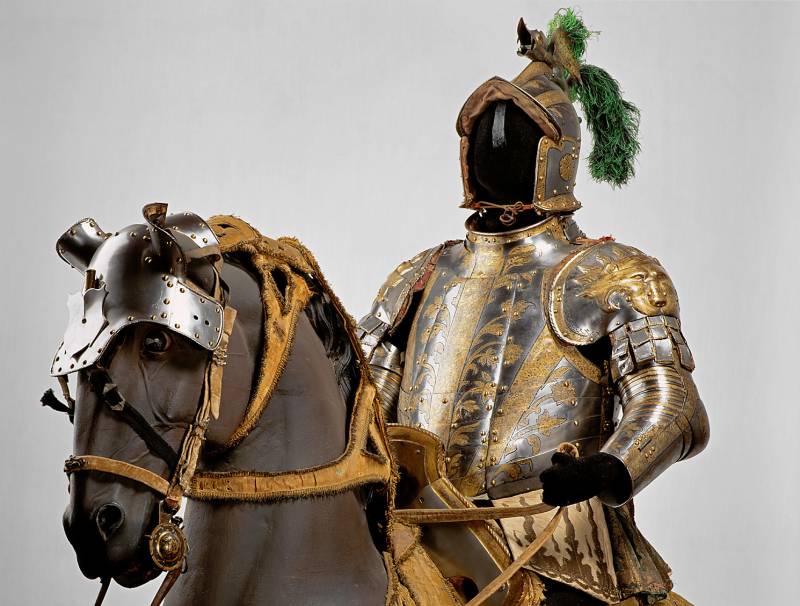
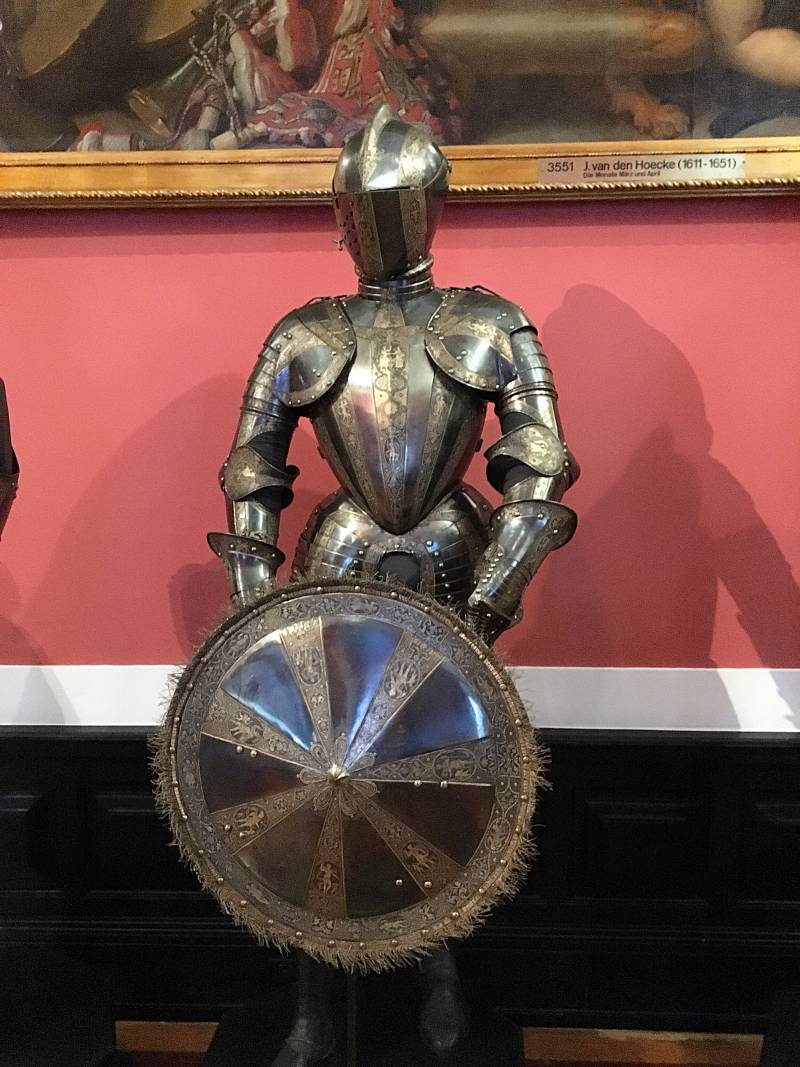
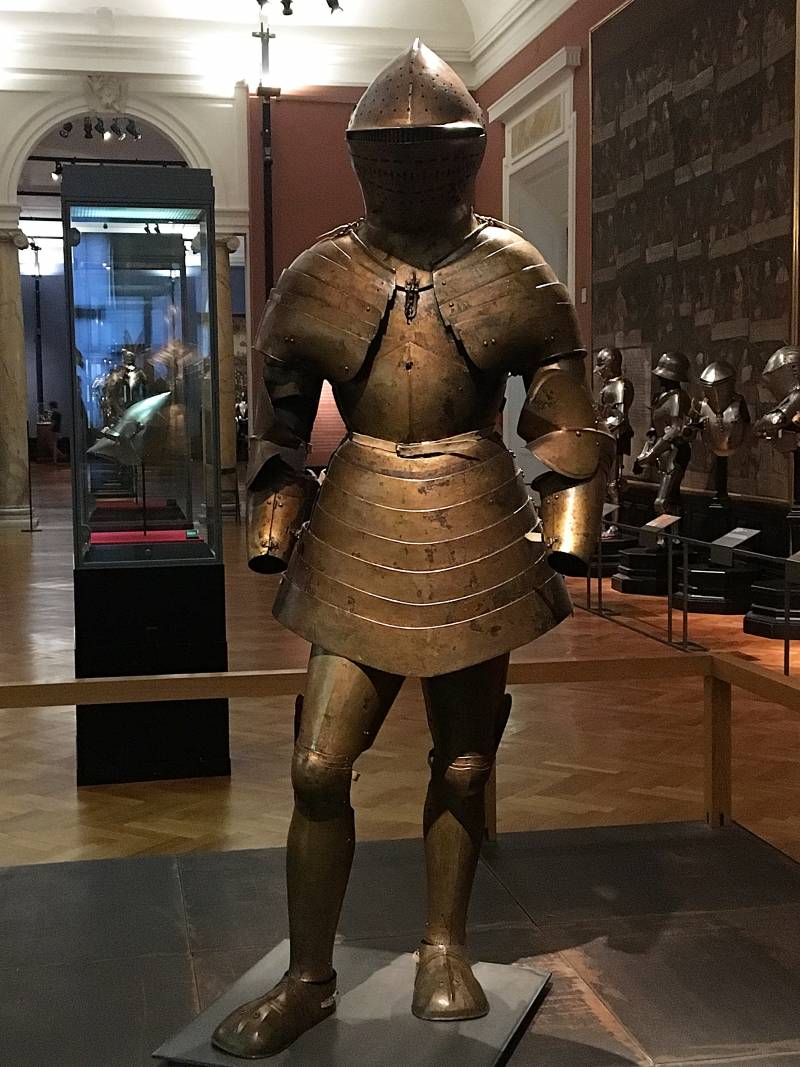
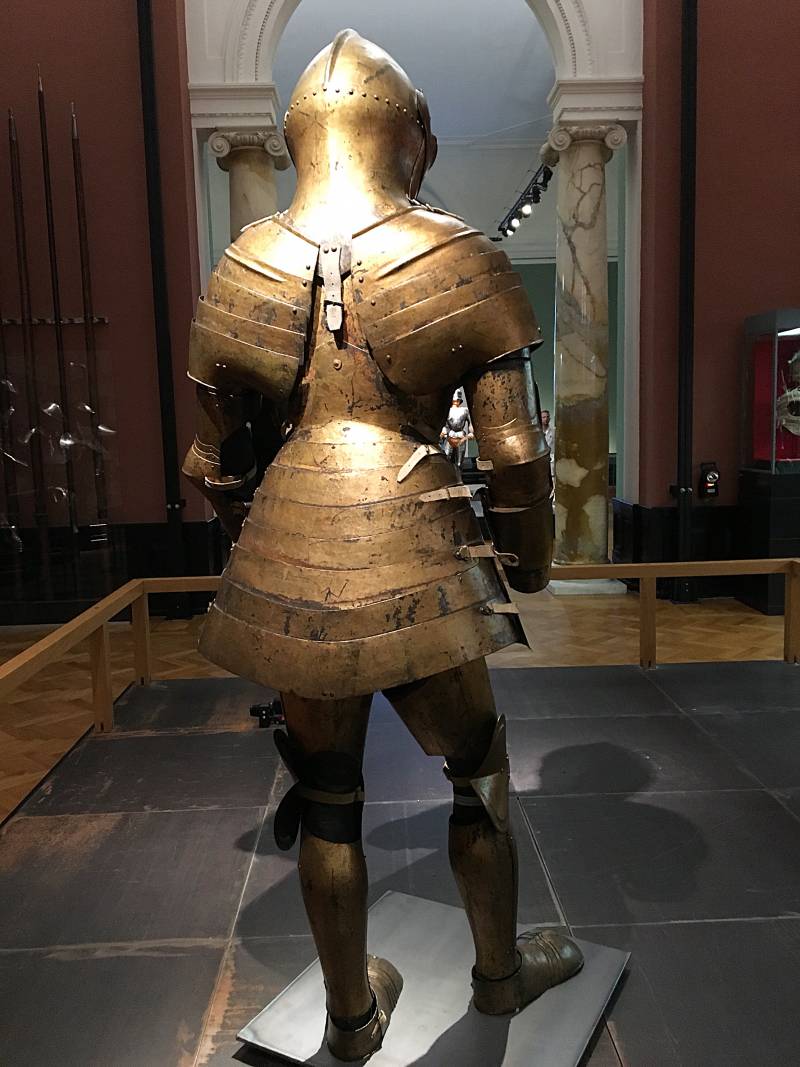
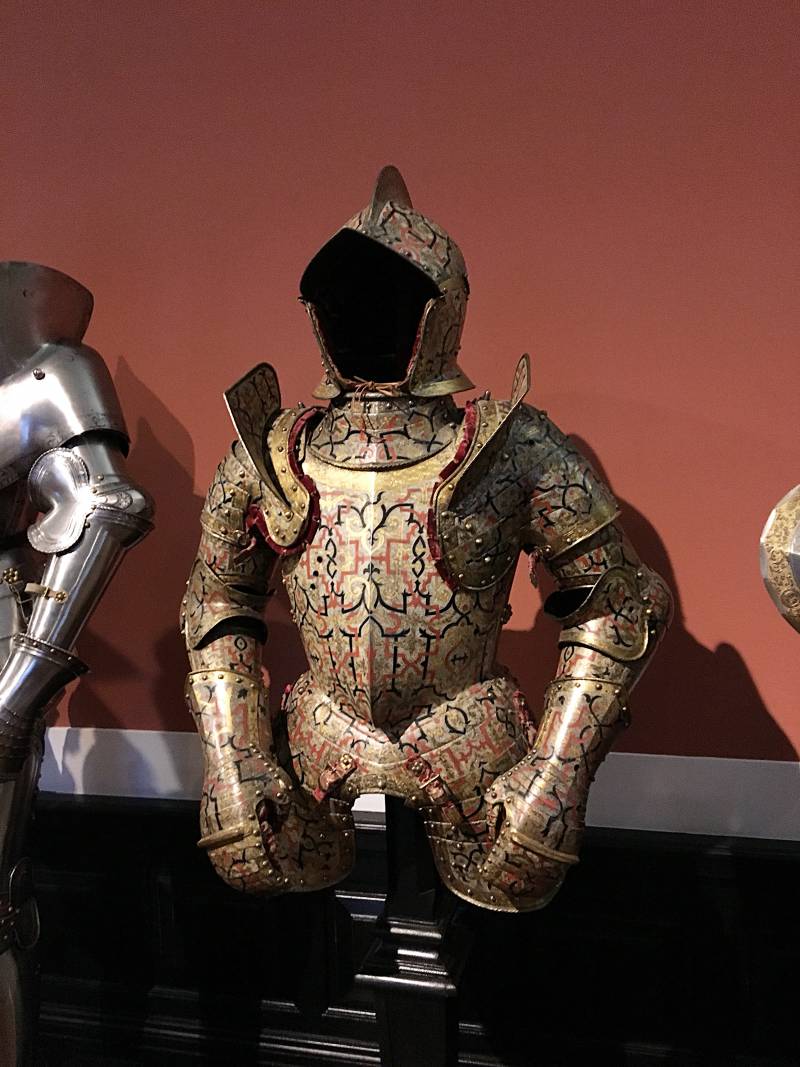
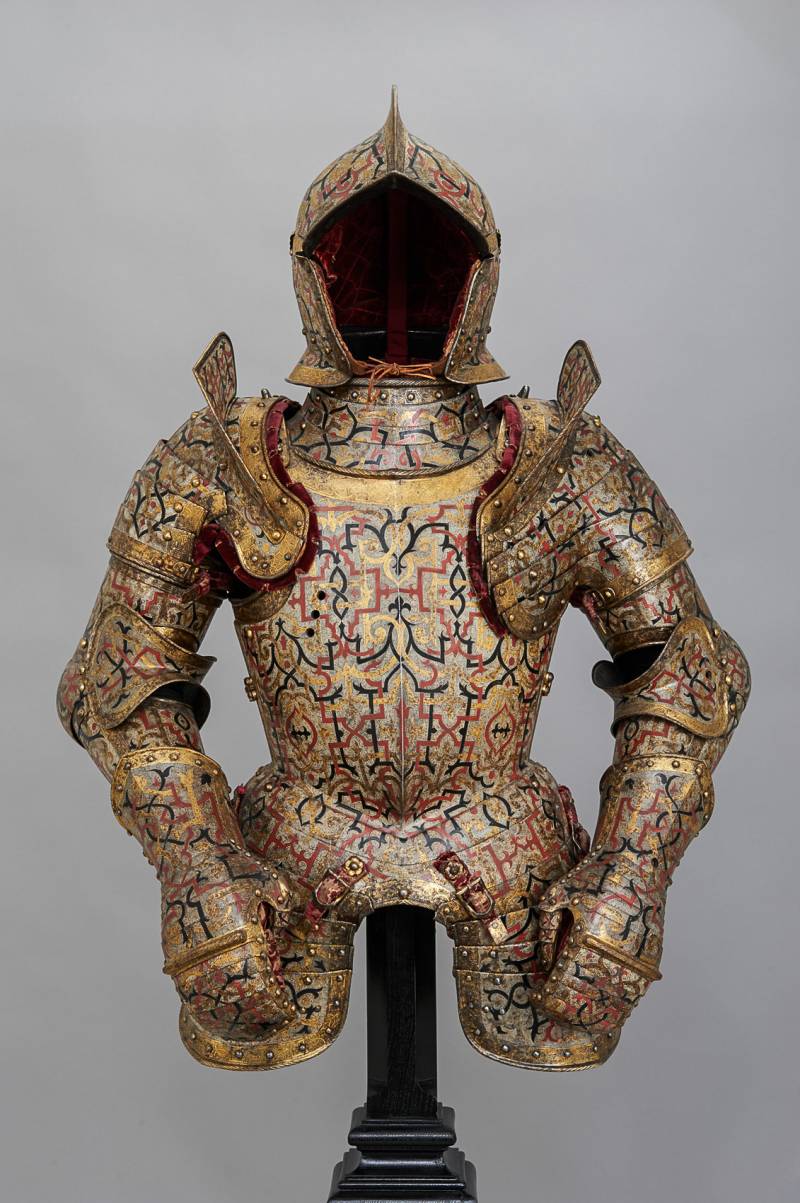
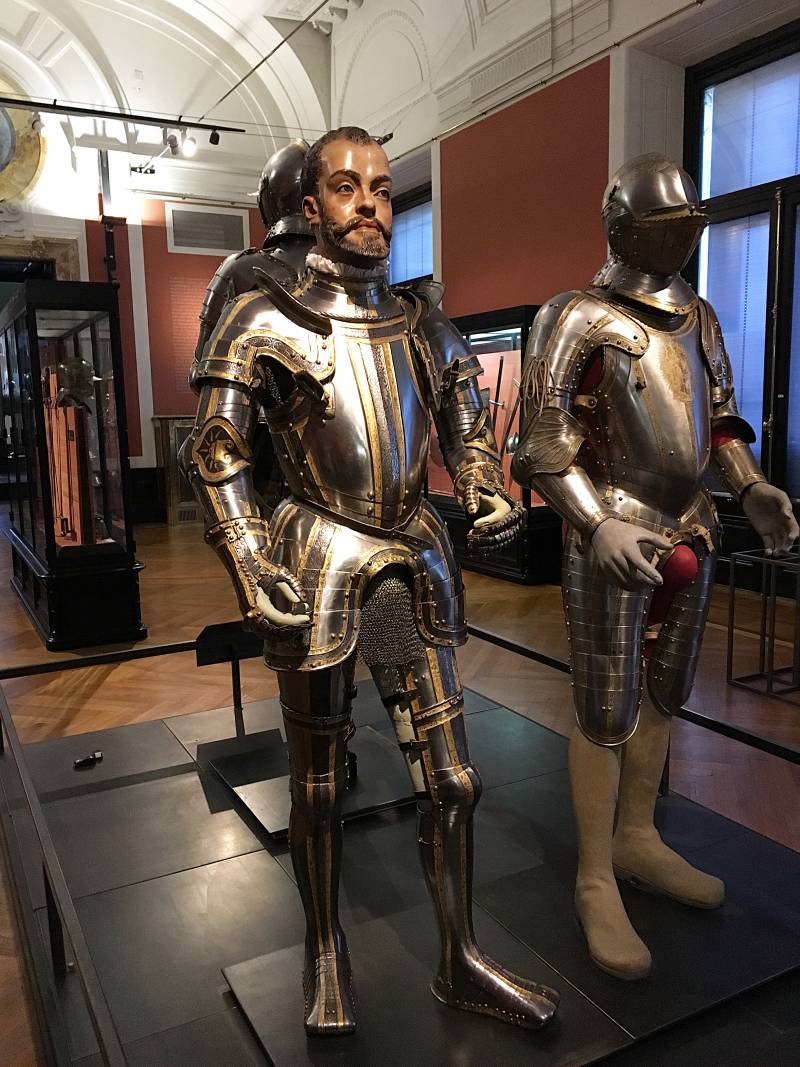
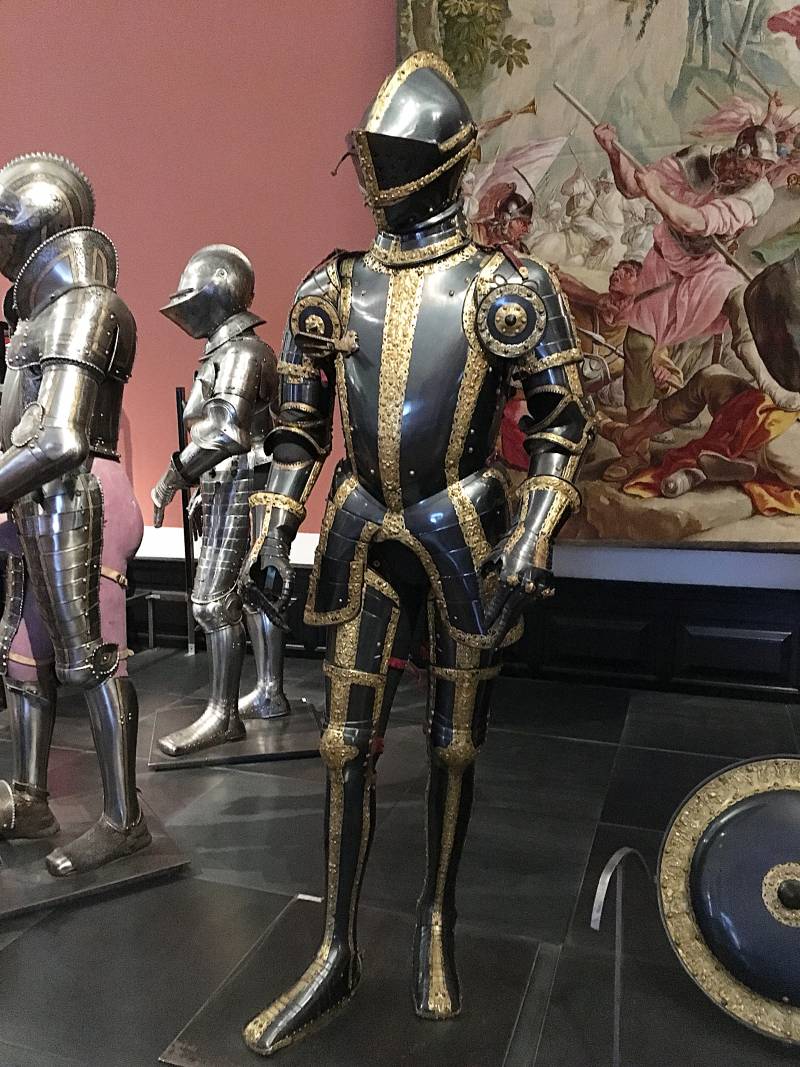
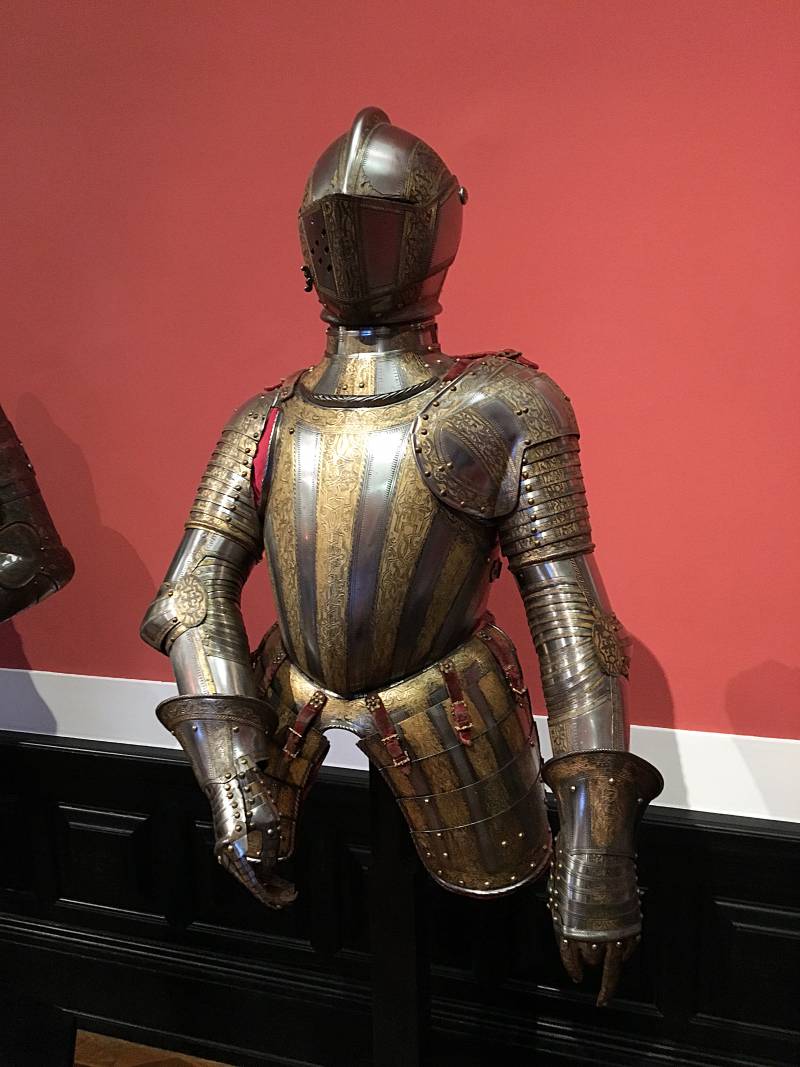
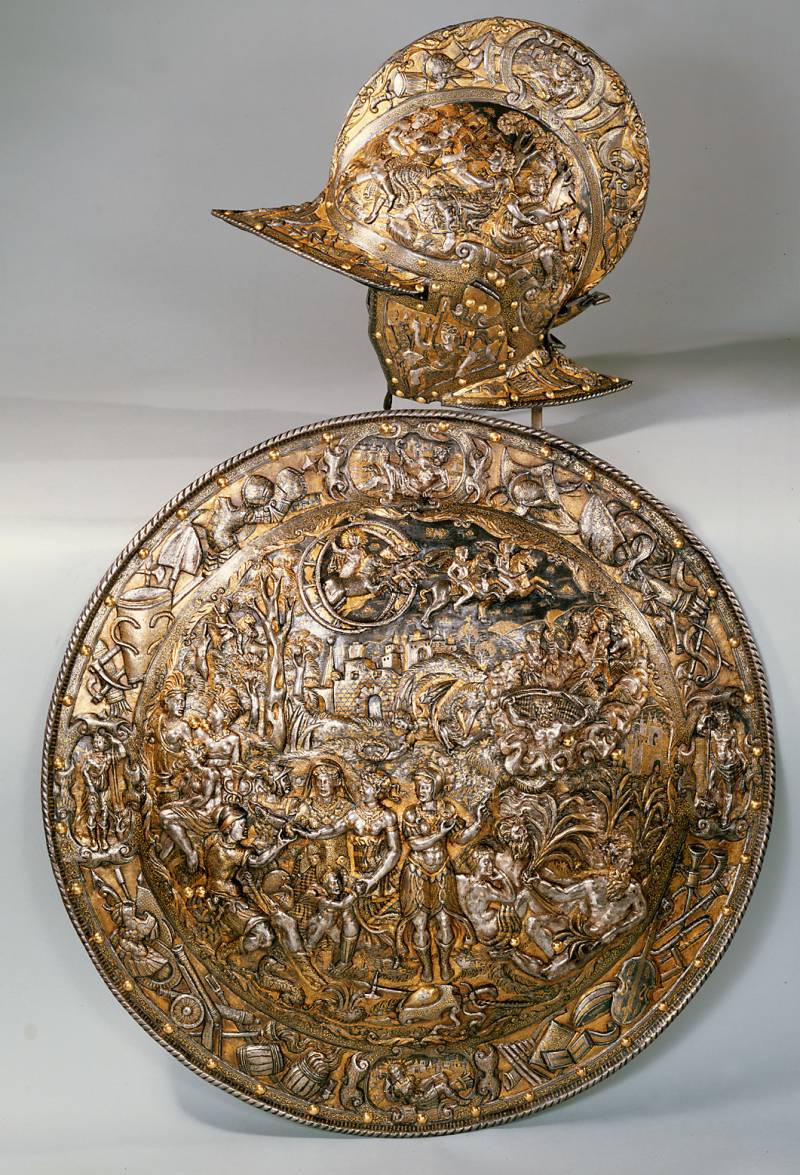
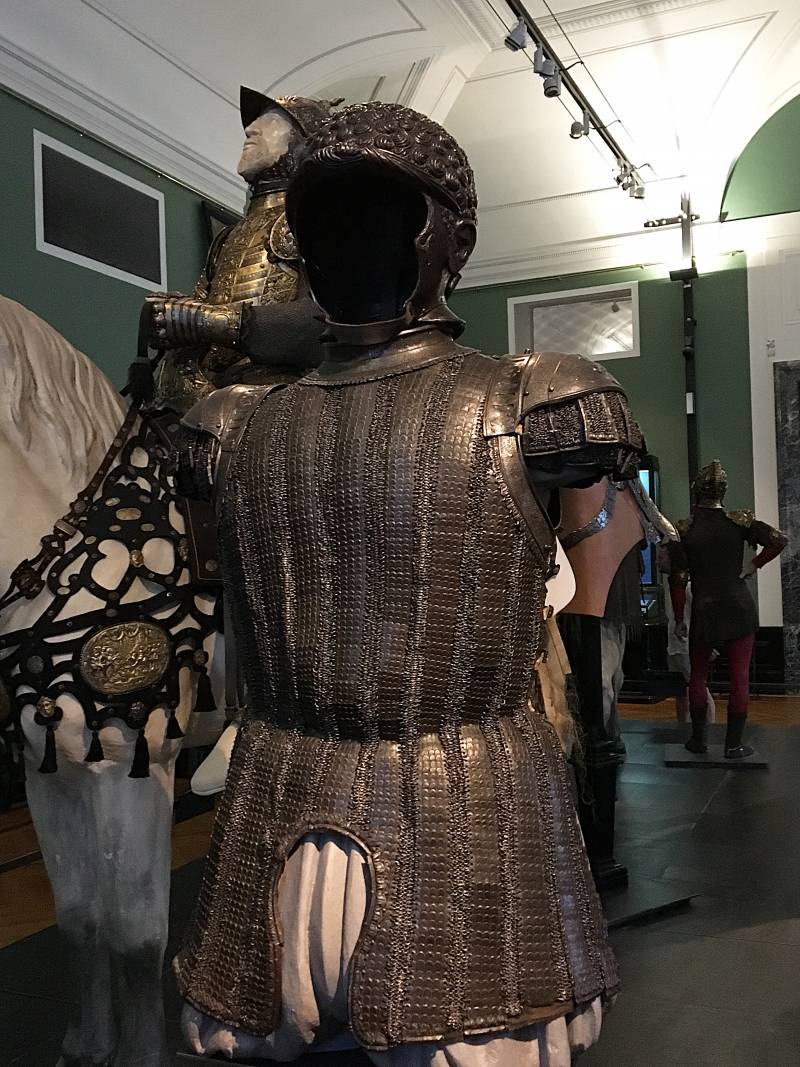
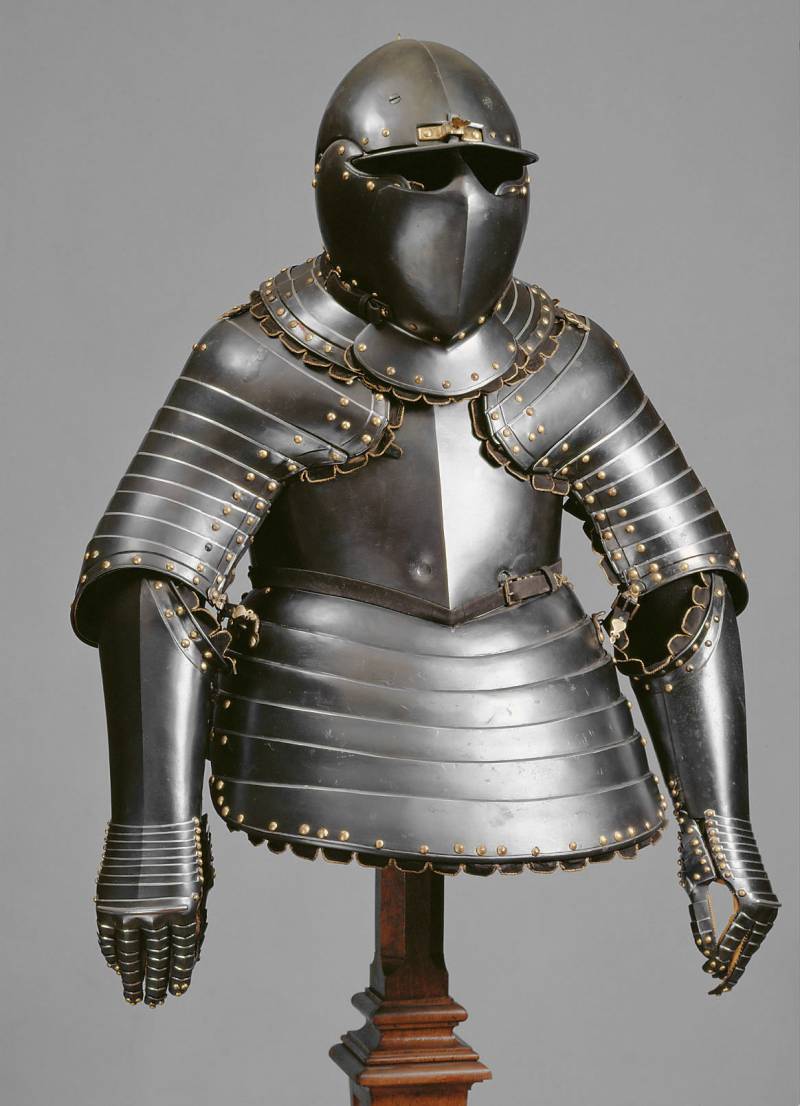
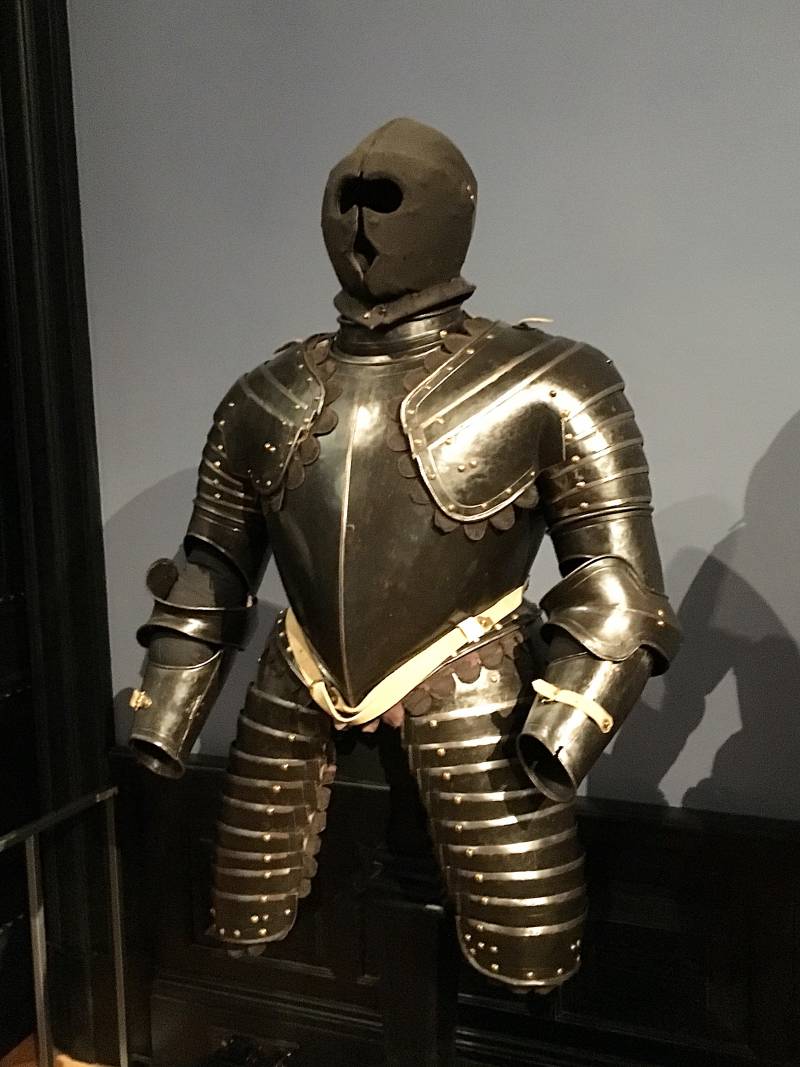
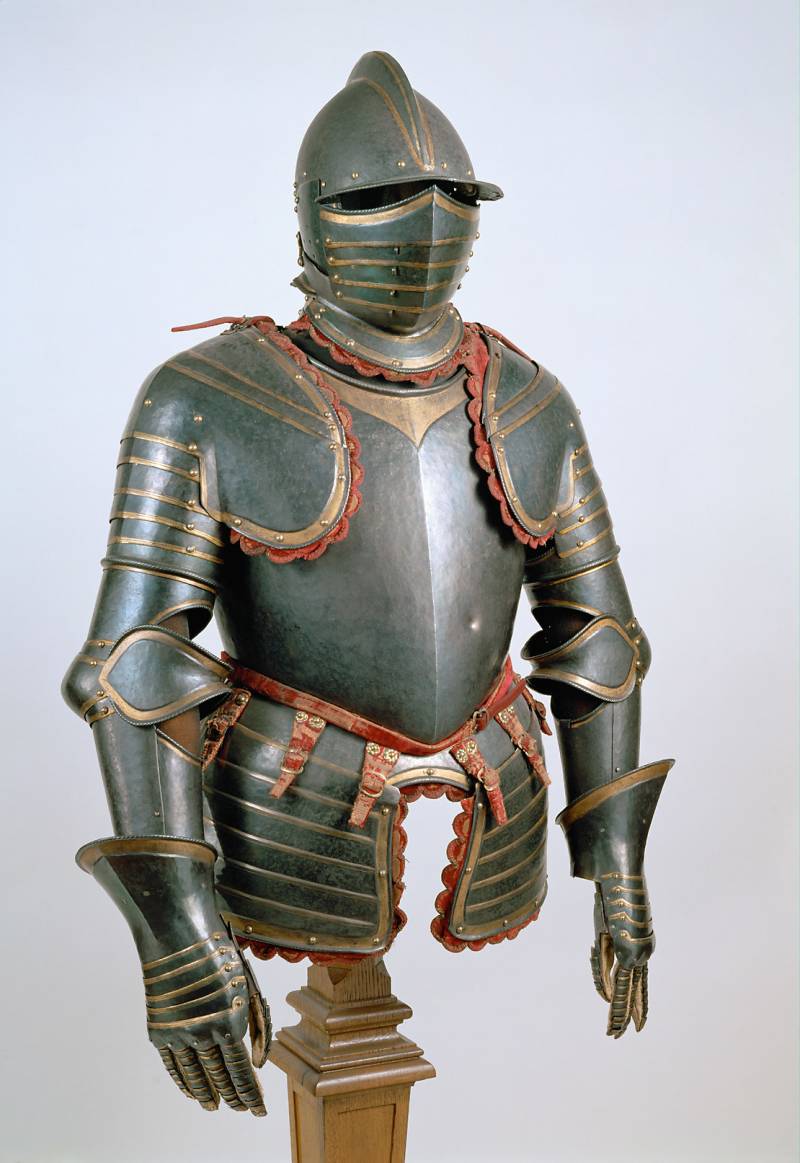
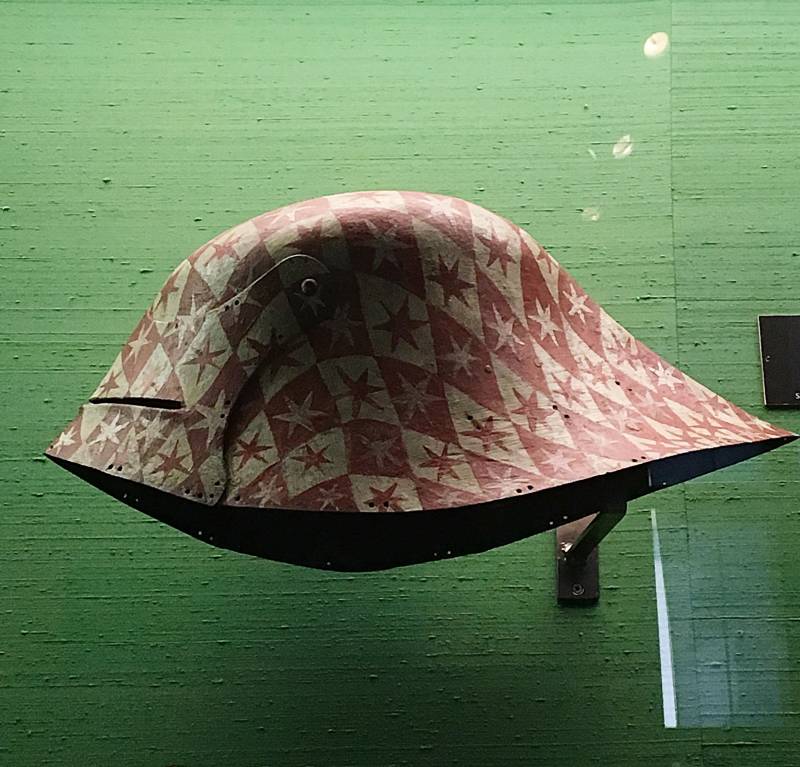
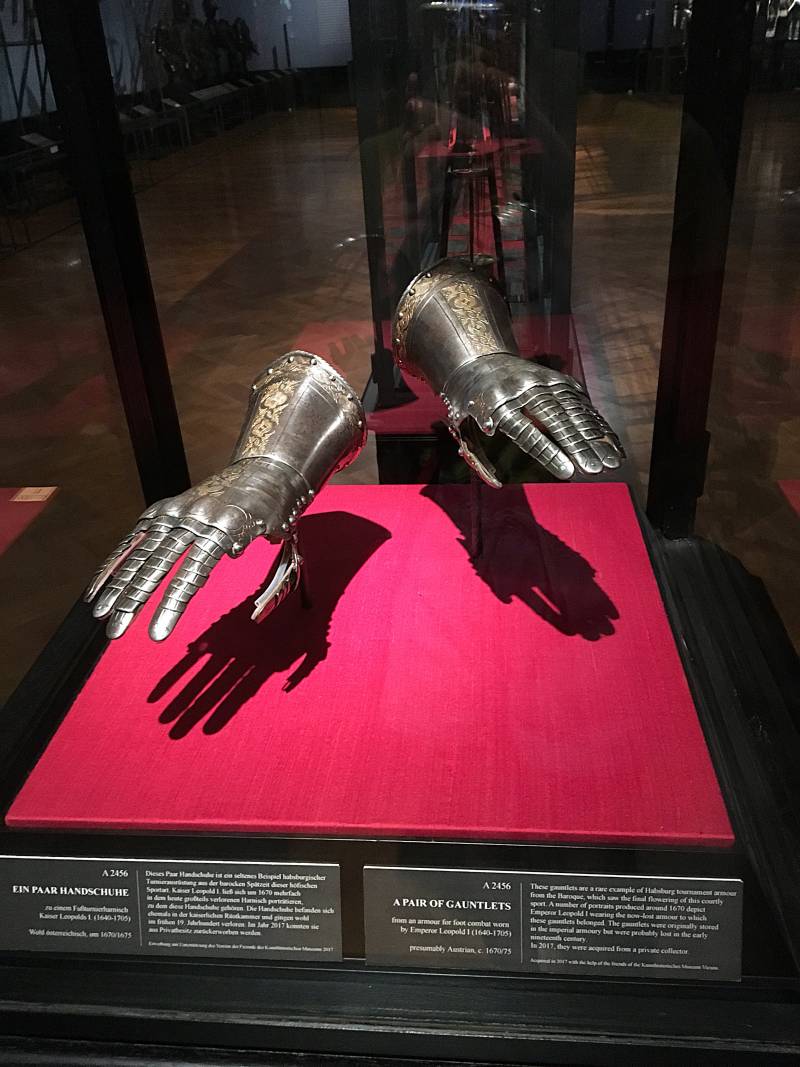
Information